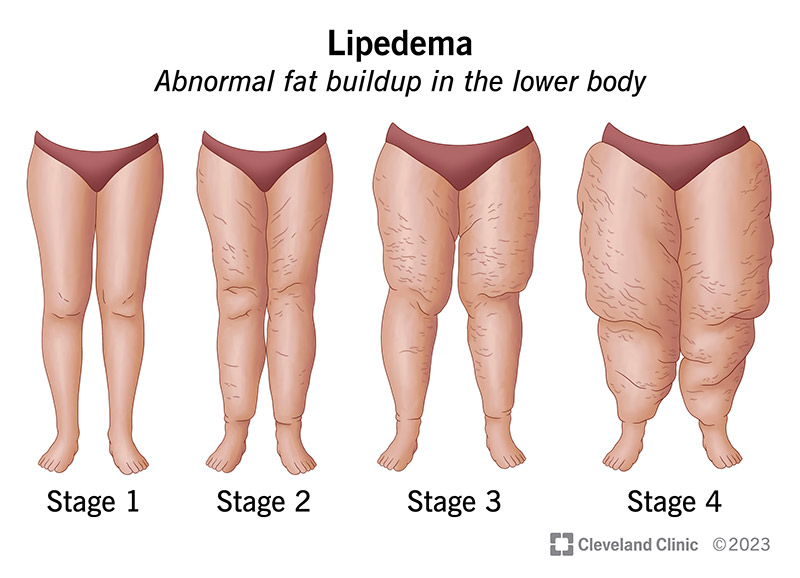What is Lipedema? Lipedema: Symptoms, Causes, and Treatment Options
- Liva

- Aug 12
- 2 min read
Lipedema: What You Need to Know.
Lipedema is a condition that is often misunderstood, misdiagnosed, and sometimes dismissed as simple weight gain. In reality, it’s a chronic disorder that affects fat distribution in the body, causing both physical and emotional challenges for those who live with it. Understanding lipedema is the first step toward getting the right diagnosis and treatment.
What Is Lipedema?
Lipedema is a chronic, progressive disorder where abnormal fat builds up under the skin, most commonly in the legs, hips, buttocks, and sometimes the arms. This fat is resistant to diet and exercise. It is not the same as obesity or normal weight gain. The condition is thought to involve both the lymphatic and vascular systems, which is why it’s often linked to swelling and tenderness.
How Does Lipedema Look?
The most distinctive feature is a disproportion between the upper and lower body.
The lower body appears much larger than the upper body, often with a clear line of demarcation at the ankles or wrists.
The fat feels soft and doughy to the touch.
Skin may look smooth at first but can develop a nodular texture as the condition progresses.
In many cases, the feet and hands are unaffected, which is one clue that helps distinguish lipedema from lymphedema.

Common Signs and Symptoms
People with lipedema often notice:
Symmetrical swelling in both legs or arms
Pain, tenderness, or easy bruising in the affected areas
A feeling of heaviness or tightness in the limbs
Limited mobility as the condition advances
Emotional distress from changes in body shape and difficulty finding clothes that fit
Statistics and Who It Affects
Lipedema predominantly affects women. Research estimates that it may occur in up to 11% of women worldwide, though many remain undiagnosed.
Men can develop lipedema, but it is extremely rare and often linked to hormonal disorders.
Symptoms often begin or worsen during times of hormonal change, such as puberty, pregnancy, or menopause.
The condition can appear at any age, but most cases are diagnosed in women between their 20s and 40s.
Is Lipedema Genetic?
Evidence suggests a genetic link. Many patients report a family history of similar body shape changes or diagnosed lipedema. However, research is ongoing to fully understand the role of genes. Hormones clearly play a role too, given the strong connection to estrogen fluctuations.
How Can You Treat Lipedema?
Currently, there’s no cure for lipedema, but symptoms can be managed and progression slowed.
Conservative management: compression garments, manual lymphatic drainage, low-impact exercise (like swimming or walking), and anti-inflammatory eating patterns.
Liposuction (specifically tumescent or water-assisted liposuction) is the only surgical option proven to remove diseased fat.
Self-care: maintaining healthy mobility, avoiding long periods of sitting or standing, and caring for skin health.

The most important step is getting a correct diagnosis early. Many people spend years being told to “just lose weight,” which delays proper treatment and increases the risk of complications like lymphedema.
-Beauthic Lisa
Join our discord community for live updates.
lipedema, lipedema symptoms, lipedema treatment, lipedema causes, lipedema legs, lipedema vs lymphedema




Comments